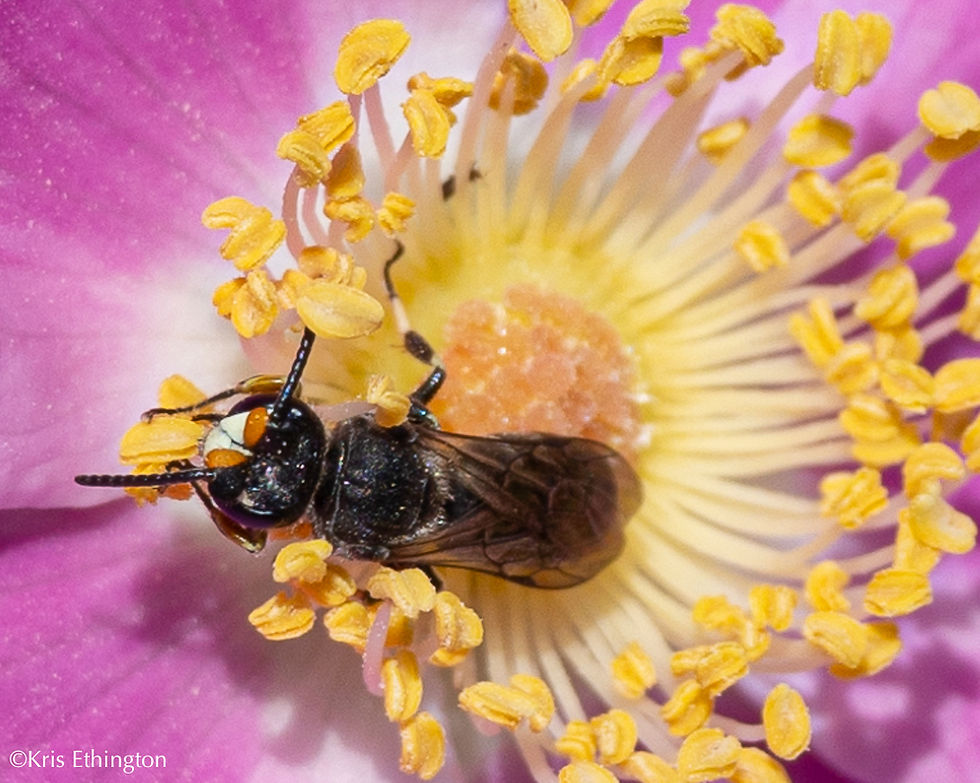Even bees like to dig in the dirt
- Lisa Brain

- Mar 22
- 2 min read
Updated: Apr 1
July 18, 2024, a group of bees emerging from the ground near my pickup caught my attention. It was fascinating watching them as they exited as they did not seem to have any manners. They were pushing and shoving against each other and one just “stood” in the opening as the others tried to push past, finally becoming free.
Then on August 15, 2024, I was back to the same area and the bees were now excavating new entrances into the ground. There were about 2 dozen holes actively being excavated. At times, there were multiple bees working from a single entrance.
Epimelissodes obliqua prefer nesting sites that are bare ground free of any vegetation and soil that is less than ideal conditions. This particular nesting site is on the edge of a county road along an orchard and the road is annually treated with a dust abatement product that is rather “oily” and sticky until it dries.

E. obliqua, previously called Svastra obliqua, is considered a medium to large solitary bee measuring in at 14-16 mm. The females have “furry” hind legs for pollen collecting and the males are slightly smaller with long antennae. E. obliqua specialists on Asteraceae, but can also be found on evening primrose and even cactus blooms.
Oblique Longhorn bees range from California to New York and are active between the months of July and September. However, they are less common in the northern states and absent from the Northeast.
Though they are considered solitary bees, which build a nest and provision it alone, they will share a nest entrance with multiple females. The nest entrance can go down about 10 inches before becoming horizontal with occasional branching. Individual cells will be dug off of the main tunnel and each one is provisioned with pollen and capped off after their egg is laid.
Interesting fact about these rather large Asteraceae loving bees, is that a slightly larger bee is a cleptoparasite to them. The Triepeolus concavus, also known as a Cuckoo Bee, will lay their eggs within the nest of the E. obliqua and they will out compete their larvae for the pollen provisions.

This site will certainly be revisited this year to observe their behavior and to try and collect a Triepeolus concavus in action.
Lisa Brain is a new member to the Washington Bee Atlas. She has been an entomologist for the past 20 years that specializes in agricultural pests in many different crop settings. Lisa grew up in the heart of agriculture in the Orondo, Wa area and has always enjoyed observing honey bees busy in the orchards each spring and looks forward to expanding that to the native bees throughout the state.




Comments